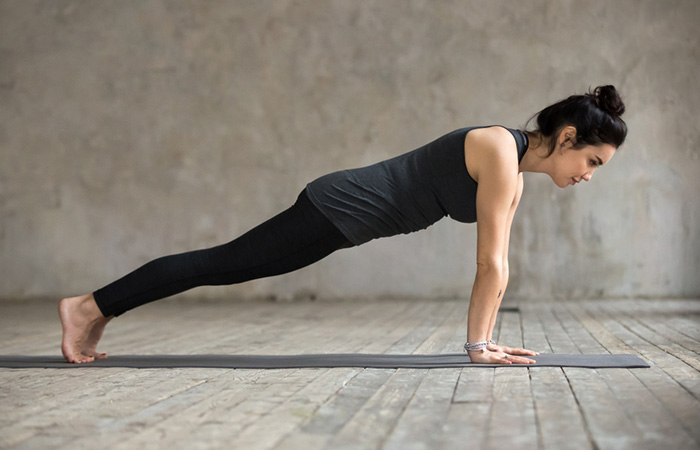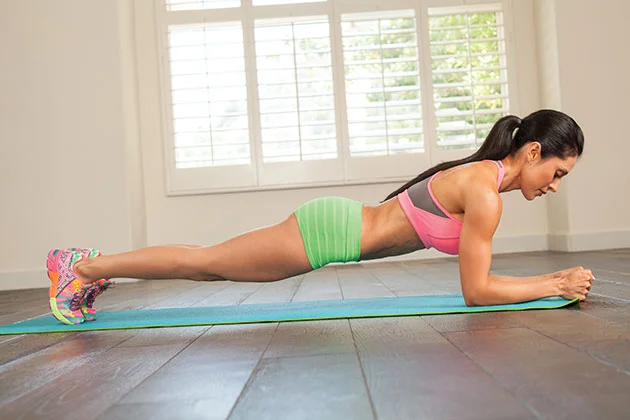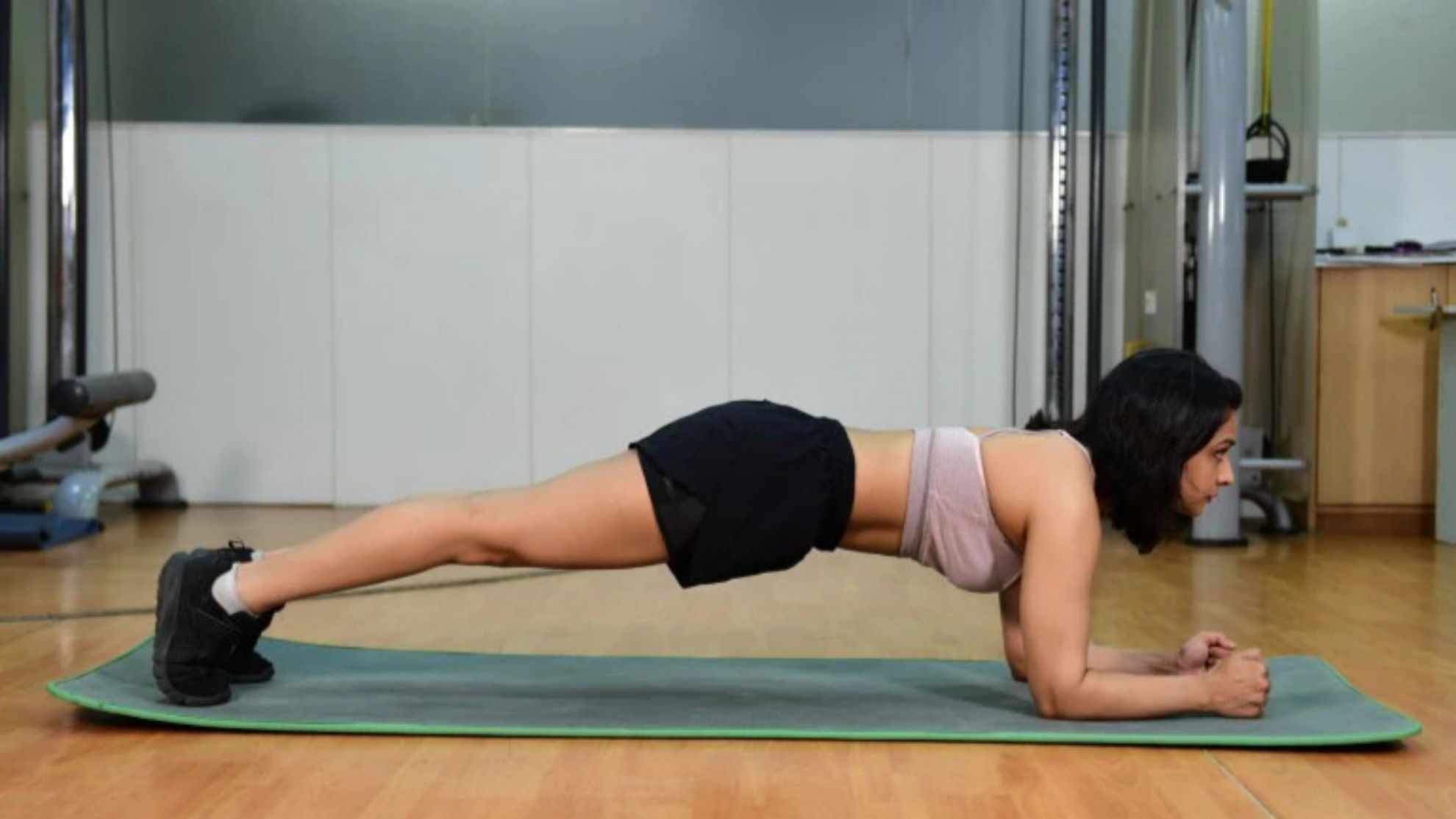When planking, if your belly hangs, it could mean your core muscles need strengthening. Planks target your abs, back, and shoulders, requiring good form to be effective. If your midsection sags, it might also be because you’re not actively engaging your core or maintaining a straight line from head to heels. This guide will explore why proper form and core strength are crucial for a successful plank and how to correct common mistakes for better results.

Contents
Why Your Belly Hangs During Planking Exercises?
When your belly hangs during planking exercises, it’s often a sign of core strength that needs improvement. The plank primarily targets your core muscles, including the abdominals, lower back, and obliques. If these muscles aren’t strong enough to maintain the plank position, your midsection may sag towards the floor.
Additionally, form plays a crucial role. Proper alignment—in which your body forms a straight line from head to heels—is essential for an effective plank. Sagging can occur if you’re not actively engaging your core muscles throughout the exercise or if your hips are either too high or too low.
Improving your core strength over time, focusing on maintaining correct form, and gradually increasing the duration of your planks can help prevent your belly from hanging. Starting with modified plank versions, like a knee plank, can also be a great way to build up your strength safely.
How To Improve Your Plank And Prevent Your Belly From Hanging?
Improving your plank and preventing your belly from hanging involves building core strength, practicing proper form, and gradually increasing your endurance. Here’s how you can achieve a stronger, more effective plank:

1. Start with Your Form:
- Align Your Body: Ensure your shoulders are directly over your elbows or wrists (depending on the plank variation), and your body forms a straight line from your head to your heels.
- Engage Your Core: Actively pull your belly button towards your spine to engage your core muscles, which helps keep your midsection from sagging.
- Position Your Legs: Keep your legs straight and together, with toes grounded. This helps distribute your weight evenly and supports your lower back.
2. Build Core Strength:
- Incorporate Core Exercises: Supplement your routine with other core-strengthening exercises like crunches, Russian twists, and leg raises. Strengthening your entire core will help improve your plank.
- Practice Modified Planks: If maintaining proper form in a full plank is challenging, start with knee planks or incline planks. These variations reduce the strain on your core while still building strength.
3. Focus on Gradual Improvement:
- Increase Duration Slowly: Start by holding the plank for short periods, like 10-15 seconds, and gradually increase the time as you get stronger.
- Consistent Practice: Consistency is key. Try to incorporate planking into your workout routine several times a week for the best results.
4. Ensure Proper Breathing:
Breathe Steadily: Don’t hold your breath while planking. Focus on breathing steadily and deeply to maintain core engagement and stability throughout the exercise.

5. Mix It Up:
Try Different Variations: Once you’re comfortable with the basic plank, introduce variations like side planks, reverse planks, or planks with leg lifts to challenge your muscles in new ways and prevent plateaus.
6. Listen to Your Body:
Adjust as Needed: If you feel strain in your back or shoulders, adjust your form. If discomfort persists, take a break and consult with a fitness professional to ensure you’re performing the exercise correctly.
7. Use Visual Aids:
Check Your Form: Use a mirror or record yourself doing a plank to visually check your form. This can help you identify areas for improvement that you might not feel.
How to Reduce Belly Fat?
Reducing belly fat is a common goal for many, not just for aesthetic reasons but also because excess abdominal fat can be a risk factor for various health issues. Achieving this involves a combination of diet, exercise, and lifestyle adjustments. Here are strategies to help reduce belly fat effectively:

1. Focus on Nutrition:
- Eat a Balanced Diet: Incorporate a variety of fruits, vegetables, whole grains, lean proteins, and healthy fats into your diet. These foods can help improve your metabolism and reduce fat storage.
- Limit Sugar and Refined Carbs: Foods high in sugar and refined carbohydrates can lead to increased belly fat. Opt for whole grains and natural sweeteners in moderation.
- Increase Protein Intake: Protein can help reduce cravings, boost metabolism, and support muscle growth, which in turn helps burn fat. Include sources like fish, lean meats, eggs, beans, and nuts.
- Include Fiber-Rich Foods: High-fiber foods can help you feel full longer and reduce overall calorie intake. Aim for vegetables, fruits, legumes, and whole grains.
2. Regular Physical Activity:
- Combine Cardio and Strength Training: Cardio exercises (like walking, running, cycling) burn calories, while strength training builds muscle, which can increase your resting metabolic rate.
- Try High-Intensity Interval Training (HIIT): HIIT involves short bursts of intense exercise followed by rest periods. It’s effective for burning fat, including abdominal fat.
- Stay Active Throughout the Day: Incorporate more physical activity into your daily routine, such as taking the stairs, walking during breaks, and standing more often.
3. Monitor Your Calorie Intake:
- Keep a Food Diary: Tracking what you eat can help you become more aware of your calorie intake and identify areas for improvement.
- Mind Your Portions: Be mindful of portion sizes to avoid overeating, even of healthy foods.
4. Reduce Stress:
Manage Stress: High stress levels can lead to increased cortisol, a hormone associated with belly fat accumulation. Engage in stress-reducing activities like yoga, meditation, or deep breathing.
5. Improve Your Sleep:
Prioritize Sleep: Aim for 7-9 hours of quality sleep per night. Poor sleep is linked to weight gain, including increased abdominal fat.
6. Stay Hydrated:
Drink Plenty of Water: Water helps keep your metabolism running efficiently and can reduce the likelihood of overeating.
7. Avoid Alcohol:
Limit Alcohol Consumption: Excessive drinking can lead to increased belly fat. Cutting down on alcohol can help reduce your waist size.
Frequently Asked Questions
Is a daily one-minute plank enough?
A one-minute plank each day can yield results, but balance is essential. Instead of focusing mainly on the duration, it’s more important to ensure that your plank form is correct. Adequate rest is also necessary to avoid overtraining.
What is the most effective plank position for losing belly fat?
Begin by lying on your back, with your arms extended by your sides and palms facing up. With your palms pressed on the floor, gradually raise your body until it forms a straight line from head to toe. Keep your arms and legs straight as you contract your abs.
Which exercise burns the most belly fat?
Aerobic exercises, like walking, dancing, running, or swimming, are very effective at burning belly fat. They elevate your heart rate which aids in fat burning. Other exercises like strength training, Pilates, and yoga can also help you lose belly fat.
What’s the common mistake people make when planking?
One common mistake is not locking your pelvis to your abdomen. Equally important as strengthening your front core, planks should also engage your sides, back, top, and bottom. They are meant to connect your upper and lower body to your core.
Can planking flatten your stomach?
A flat stomach can result from fat-burning exercises, core toning, and muscle building—all of which can be achieved by exercises like planks and leg raises. Planks target your core muscles, helping to flatten your stomach when done regularly and correctly.

Hello, I’m Ravindra. Over the years, I’ve immersed myself deeply into the world of fitness and health, transforming both my body and mind. Writing has allowed me to share my journey, insights, and expertise with those just starting out and seasoned fitness enthusiasts alike. Beyond just routines and diets, I believe in inspiring others to adopt a holistic approach to well-being.
